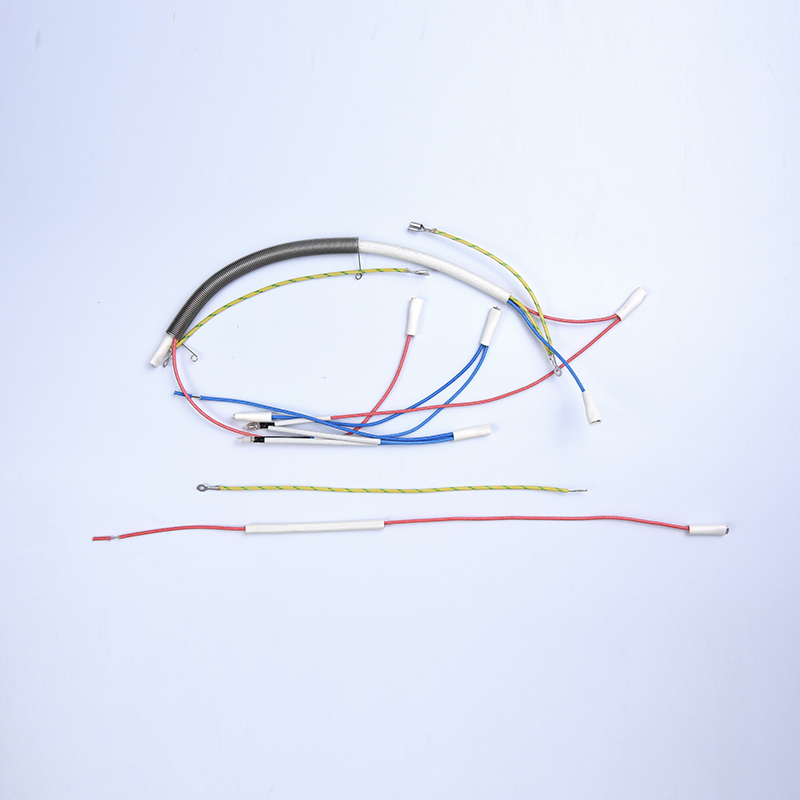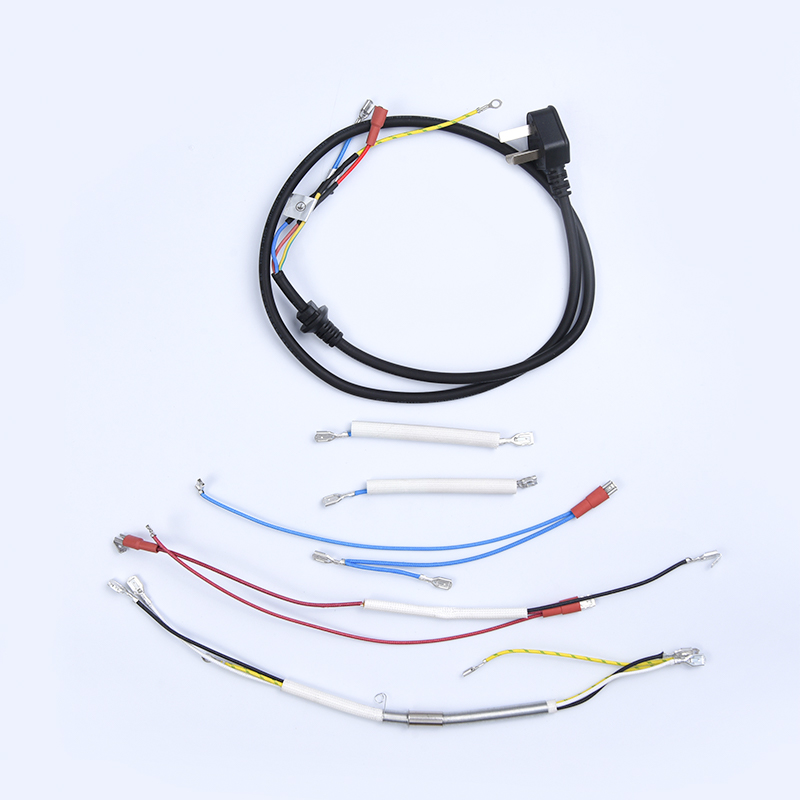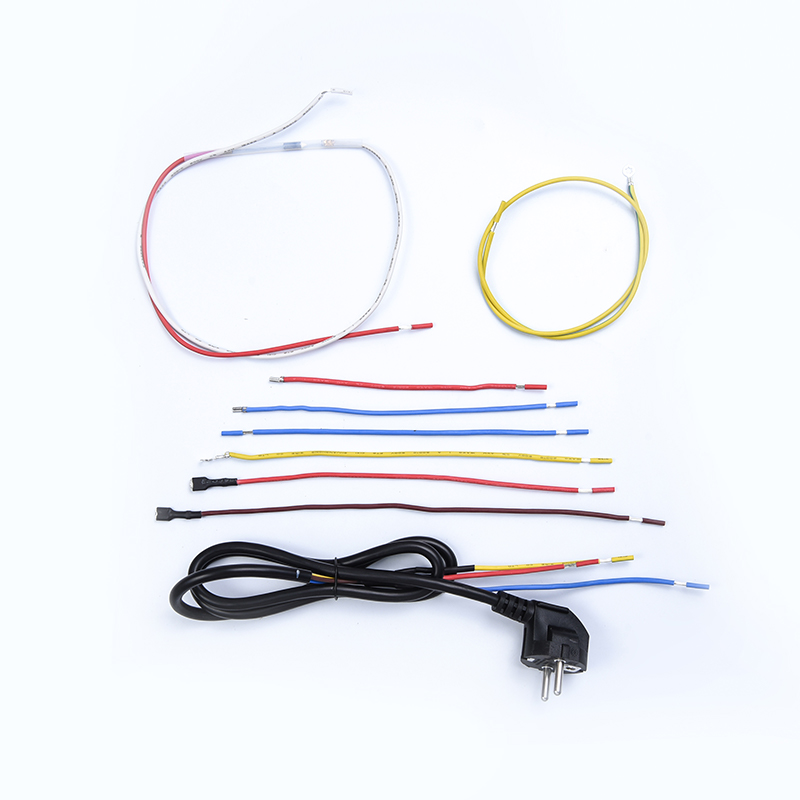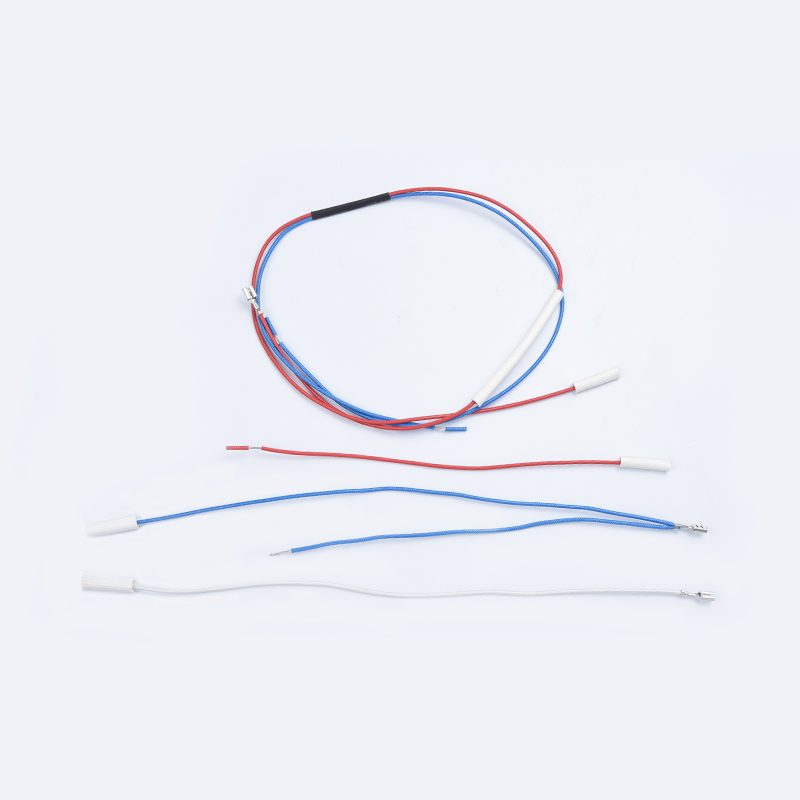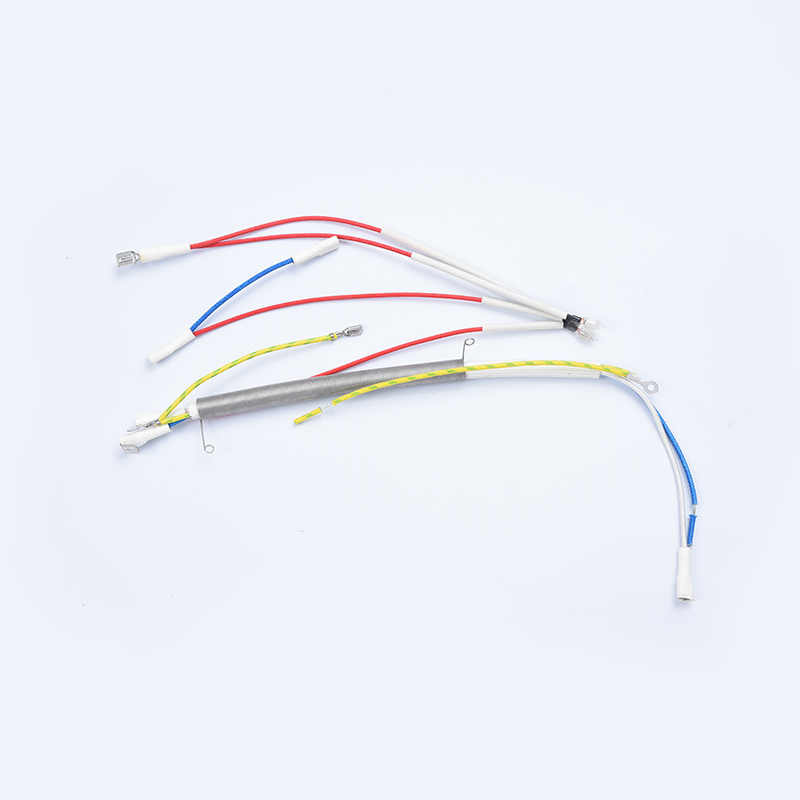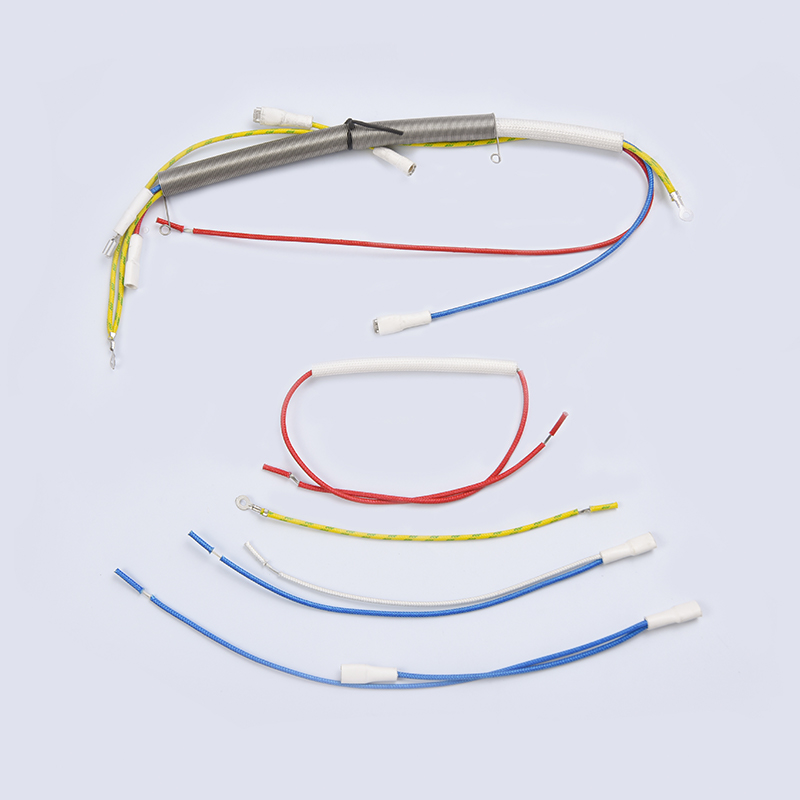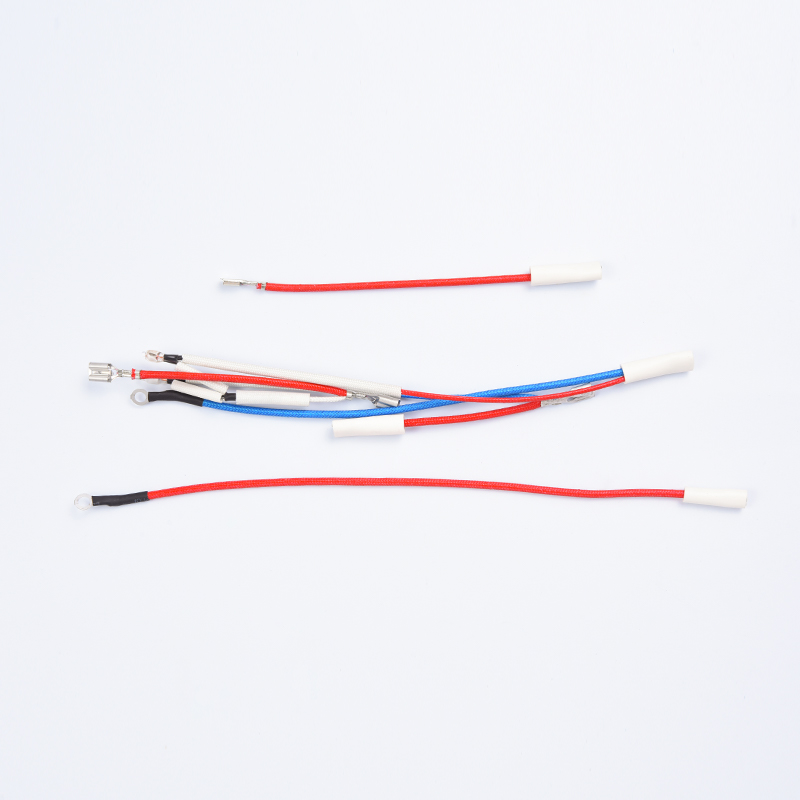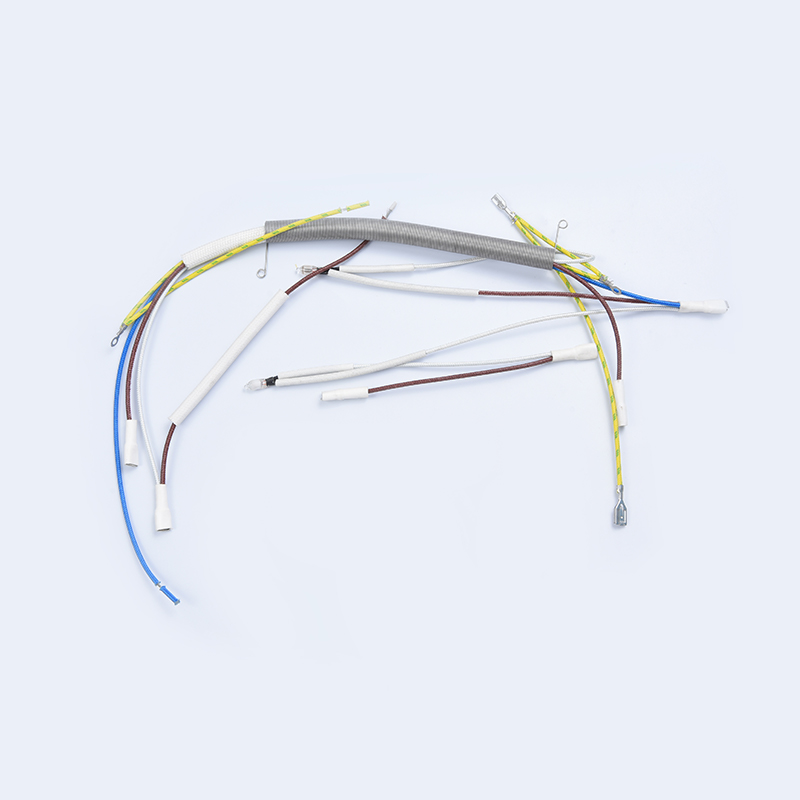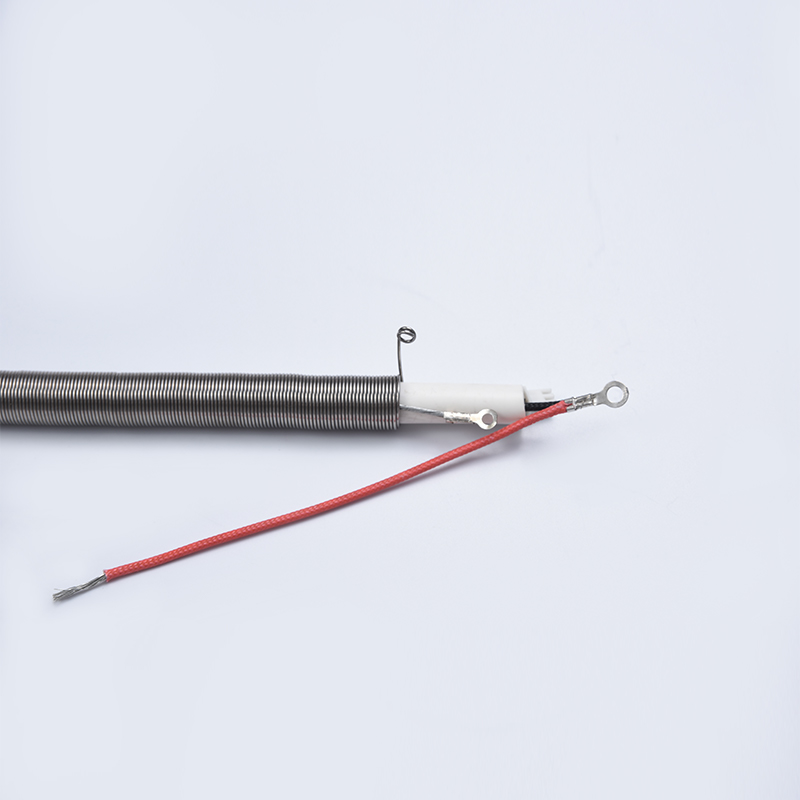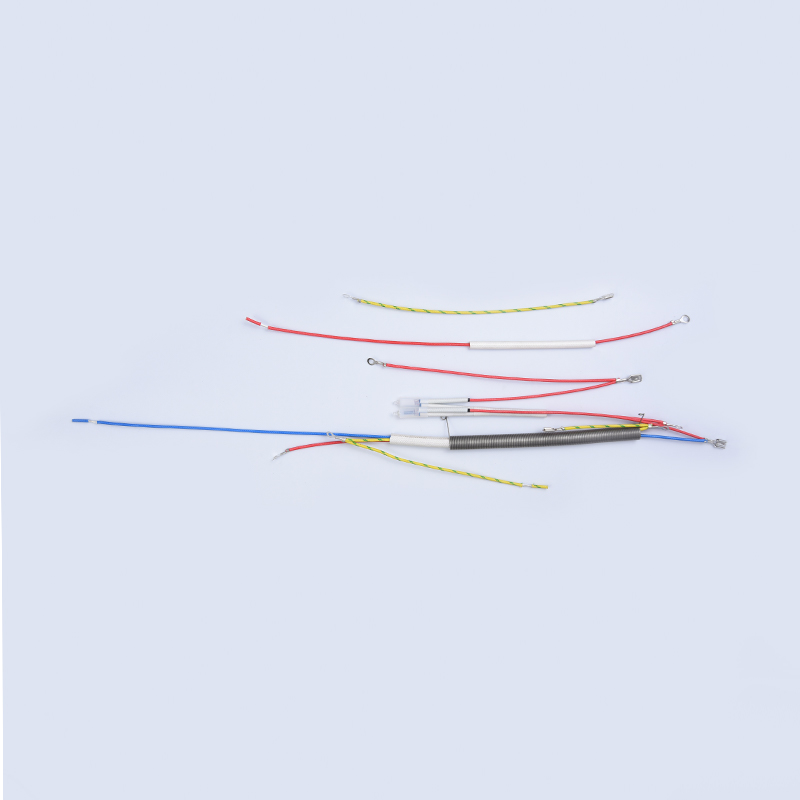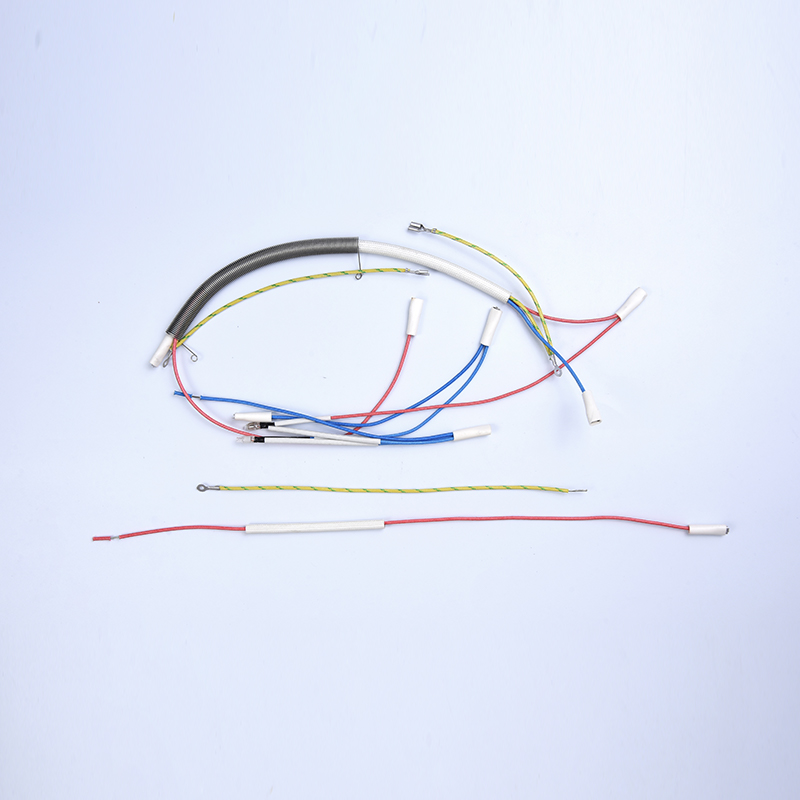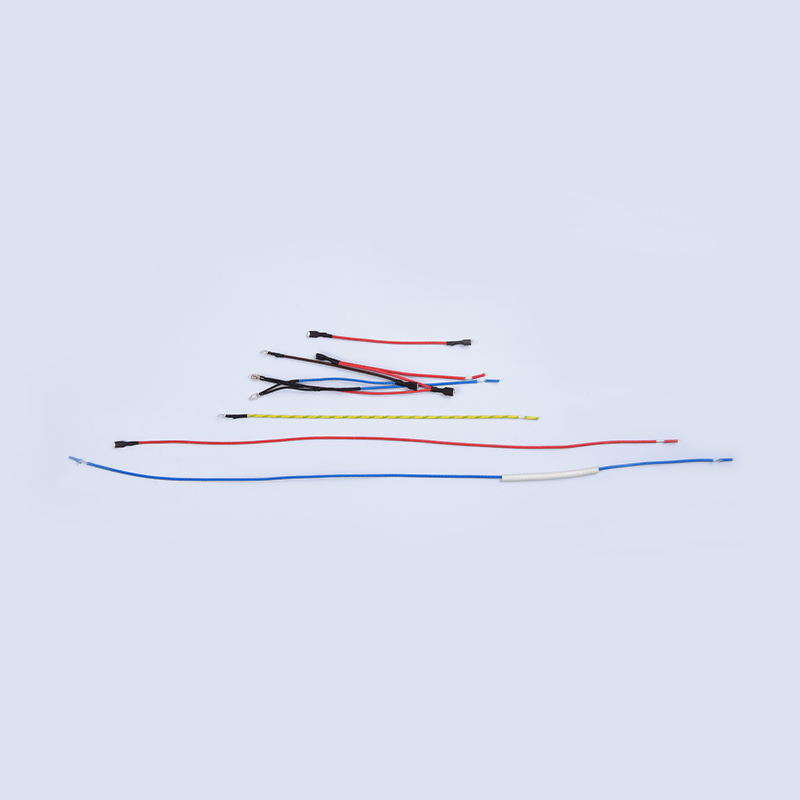+86-0574-63316601
Content
- 1 Introduction to NTC Temperature Sensors
- 2 How NTC Temperature Sensors Work
- 3 Key Specifications of NTC Temperature Sensors
- 4 Types of NTC Temperature Sensors
- 5 Applications of NTC Temperature Sensors
- 6 Industries Using NTC Temperature Sensors
- 7 How to Select the Right NTC Thermistor
- 8 NTC Thermistor Circuits and Wiring
- 9 Calibration and Testing of NTC Temperature Sensors
- 10 Advantages and Disadvantages of Using NTC Temperature Sensors
- 11 Potential Problems and Troubleshooting
- 12 Future Trends in NTC Thermistor Technology
Introduction to NTC Temperature Sensors
What is an NTC Thermistor?
An NTC thermistor, short for Negative Temperature Coefficient thermistor, is a type of resistor whose resistance is highly dependent on temperature. The term "thermistor" is a portmanteau of thermally sensitive resistor. NTC thermistors are a key component in many electronic circuits because their resistance decreases non-linearly as their temperature increases. They are typically made from a sintered mixture of metal oxides, such as manganese, nickel, cobalt, and iron, which are then shaped into beads, discs, or cylinders. The unique properties of these materials make them ideal for precise and cost-effective temperature sensing and control.
Basic Principle: Resistance and Temperature
The fundamental principle behind an NTC thermistor's operation is its negative temperature coefficient. This means that as the ambient temperature rises, the thermistor's resistance drops. Conversely, as the temperature falls, its resistance increases. This predictable relationship allows the thermistor to be used as a transducer, converting a change in temperature into a measurable change in electrical resistance. This change in resistance can then be measured by a circuit and used to determine the temperature of the environment or object the thermistor is in contact with.
Advantages and Disadvantages
NTC thermistors offer several advantages, including high sensitivity to temperature changes, which makes them very effective for applications requiring a high degree of precision. They are also relatively low-cost, physically small, and easy to use in simple electronic circuits. However, they also have some disadvantages. Their primary drawback is their non-linear resistance-temperature relationship, which can complicate circuit design and requires compensation (often with software or additional components) to accurately interpret the temperature. Additionally, NTC thermistors have a limited operational temperature range compared to other temperature sensors like RTDs or thermocouples, and their long-term stability can be an issue in certain harsh environments.
How NTC Temperature Sensors Work
Negative Temperature Coefficient Explained
The Negative Temperature Coefficient is the defining characteristic of NTC thermistors. This principle describes a material's property where its electrical resistance decreases as its temperature increases. This is a fundamental concept in semiconductor physics. In NTC thermistors, the material's increased thermal energy causes more charge carriers (electrons) to be released from their atomic bonds. These free electrons are then available to conduct electricity. A higher concentration of charge carriers means the material becomes more conductive, which in turn leads to a lower electrical resistance. This inverse relationship between temperature and resistance is what allows the NTC thermistor to function as a temperature sensor.
Resistance-Temperature Relationship
The relationship between the resistance of an NTC thermistor and its absolute temperature is highly non-linear. Unlike a linear device where a change in one variable directly corresponds to a proportional change in another, the resistance of an NTC thermistor changes exponentially with temperature. This non-linearity is a crucial aspect to consider when designing circuits and interpreting readings. It means that the sensitivity of the thermistor (the rate of change of resistance with temperature) is much higher at lower temperatures than at higher temperatures. This makes them particularly well-suited for applications that require high precision within a specific, narrow temperature range.
Key Equations: Steinhart-Hart and Beta Equation
To accurately convert the measured resistance of an NTC thermistor into a temperature reading, specific equations are used to model the non-linear relationship.
The Steinhart-Hart Equation is the most widely used and accurate mathematical model for NTC thermistors. It is a third-order polynomial equation that relates the natural logarithm of the resistance to the reciprocal of the absolute temperature.
The Beta () Equation is a simpler, but less accurate, approximation of the resistance-temperature relationship. It's often used for a quick calculation or for applications that don't require high precision. It assumes a constant B-value over a limited temperature range.
A comparison of the two equations is provided in the table below:
| Feature | Steinhart-Hart Equation | Beta Equation |
| Accuracy | High, for a wide temperature range | Lower, for a limited temperature range |
| Complexity | More complex (three coefficients) | Simpler (one constant, B-value) |
| Application | High-precision applications | Quick approximations, general use |
| Coefficients | A, B, and C | B-value |
Key Specifications of NTC Temperature Sensors
Resistance Value at 25°C ()
The Resistance Value at 25°C () is the fundamental reference point for an NTC thermistor. This value, specified in Ohms (), is the nominal resistance of the thermistor at a standard ambient temperature of 25°C (298.15 K). It serves as the baseline for all other calculations and is the primary parameter used to identify a thermistor. Common values range from a few hundred Ohms to several hundred kilo-Ohms, such as 1kΩ, 10kΩ, or 100kΩ.
B Value (Thermal Sensitivity)
The B Value, or thermal constant, is a measure of the thermistor's thermal sensitivity. It quantifies the slope of the resistance-temperature curve between two specified temperature points. A higher B value indicates a steeper curve, meaning the thermistor's resistance changes more dramatically for a given change in temperature. This translates to higher sensitivity. The B value is calculated using the Beta Equation and is typically specified by the manufacturer for a specific temperature range, for example, (for the range 25°C to 85°C).
Tolerance and Accuracy
Tolerance is the maximum allowable deviation of a thermistor's resistance from its nominal value at a specific temperature, usually 25°C. It is expressed as a percentage, for example, ±1% or ±5%. A tighter tolerance indicates a more precise and consistent component. Accuracy refers to how closely the sensor's measurement matches the true temperature. While tolerance is a measure of resistance at a single point, accuracy is a measure of temperature measurement across the entire operating range, taking into account the B value tolerance.
Operating Temperature Range
The Operating Temperature Range defines the minimum and maximum temperatures at which the thermistor is designed to function reliably. This range can vary widely depending on the thermistor's material and encapsulation. Standard thermistors might operate from -40°C to 125°C, while high-temperature versions can go up to 250°C or more. Operating the thermistor outside this range can lead to permanent damage or a significant loss of accuracy and stability.
Dissipation Constant
The Dissipation Constant (or dissipation factor) is the amount of power (in milliwatts, mW) required to raise the thermistor's body temperature by 1°C from its ambient temperature. It's a critical parameter for preventing self-heating, which occurs when the current flowing through the thermistor generates enough heat to alter its own resistance and lead to inaccurate readings. A higher dissipation constant means the thermistor can handle more power without significant self-heating, making it more robust in high-current applications.
Thermal Time Constant
The Thermal Time Constant is a measure of how quickly a thermistor responds to a change in temperature. It is defined as the time (in seconds) required for the thermistor's temperature to change by 63.2% of the total temperature difference when subjected to a step change in ambient temperature. A smaller thermal time constant indicates a faster response time, which is crucial for applications that require rapid temperature detection.
Stability and Reliability
Stability refers to a thermistor's ability to maintain its electrical characteristics over a long period of time. It is measured by the change in resistance at a reference temperature after a specified period of time under certain environmental conditions. Reliability is the probability of the thermistor performing its intended function without failure. Factors like hermetic sealing (e.g., glass encapsulation) and robust construction enhance both stability and reliability, protecting the thermistor from moisture, thermal shock, and mechanical stress.
Types of NTC Temperature Sensors
NTC thermistors come in various physical forms, each with its own set of characteristics that make it suitable for specific applications. The different types are primarily distinguished by their construction, size, and encapsulation, which affect their thermal response time, durability, and suitability for various environments.
Disc Type
Disc-type thermistors are made by pressing a mixture of metal oxide powders into a round die, which is then sintered at high temperatures. Leads are attached to the flat faces of the disc. They are known for their high dissipation constant due to their larger surface area and are often used in applications requiring a higher power handling capability, such as inrush current limiting. Their larger size, however, means a slower thermal response time compared to smaller types.
Chip Type
Chip-type thermistors are smaller and have a faster response time than disc types. They are manufactured using a tape-casting process where a slurry of material is spread into a thin film, dried, and then cut into small chips. Their compact size makes them ideal for surface-mount applications or for integration into tiny probe assemblies where space is limited.
Glass Encapsulated Type
Glass-encapsulated thermistors are beads or chips sealed in an airtight glass bubble. This hermetic sealing provides superior protection from moisture, chemical agents, and other harsh environmental factors, significantly improving their long-term stability and reliability. They can operate at higher temperatures than other types, making them suitable for automotive and high-temperature industrial applications. The glass encapsulation, however, can make them more fragile and prone to mechanical damage.
Surface Mount (SMD) Type
Surface Mount Device (SMD) thermistors are designed for automated assembly on printed circuit boards (PCBs). They are typically chip-type thermistors with metallized terminations that allow them to be soldered directly onto the board's surface. SMD thermistors are extremely compact and offer a very fast thermal response due to their low thermal mass and close contact with the PCB. They are widely used in consumer electronics, mobile devices, and battery packs for temperature compensation and monitoring.
Leaded Type
Leaded thermistors are the most common and versatile type, consisting of a thermistor element (chip, bead, or disc) with wire leads attached. These leads can be bare or insulated, and the thermistor itself is often coated with epoxy or a protective polymer for durability and electrical insulation. Leaded thermistors are used for general-purpose temperature sensing and can be easily mounted on PCBs, integrated into probe assemblies, or used in through-hole applications.
Applications of NTC Temperature Sensors
NTC thermistors are versatile components used across a wide range of applications, leveraging their unique temperature-dependent resistance.
Temperature Measurement
This is the most common application. NTC thermistors are used to accurately measure temperature in devices ranging from household appliances like ovens, refrigerators, and coffee makers to sophisticated industrial and medical equipment. Their high sensitivity allows for precise temperature readings, often in a simple voltage divider circuit. The change in resistance is converted into a voltage signal, which is then processed by a microcontroller or analog circuit to display the temperature.
Temperature Compensation
Many electronic circuits and components, such as integrated circuits (ICs) and crystal oscillators, have performance characteristics that drift with temperature. NTC thermistors are used in temperature compensation circuits to counteract these changes. By placing an NTC thermistor in a circuit, its resistance change with temperature can be used to adjust another component's behavior, ensuring the overall circuit performance remains stable despite temperature fluctuations. For example, they can be used to stabilize the gain of an amplifier or the frequency of an oscillator.
Temperature Control
In temperature control systems, NTC thermistors act as the feedback element. They monitor the temperature of a system, and the measured value is used to control a heating or cooling element to maintain a desired temperature. Examples include thermostats, HVAC systems, and climate control in vehicles. When the thermistor detects the temperature has deviated from the set point, the control circuit activates a heater or a fan to bring the temperature back to the target.
Inrush Current Limiting
High-power electronic devices, like switch-mode power supplies and electric motors, can draw a very large amount of current at the moment they are turned on, known as inrush current. This surge can damage components or trip circuit breakers. Power NTC thermistors are specifically designed for this application. They have a high resistance when cold, which effectively limits the inrush current. As current flows, the thermistor self-heats, its resistance drops significantly, and it becomes a low-resistance path, allowing the circuit to operate normally with negligible power loss.
Overheating Protection
NTC thermistors are critical components in safety circuits for overheating protection. They are placed near heat-sensitive components, such as batteries, CPUs, and power transistors. If the temperature of the component exceeds a safe limit, the thermistor's resistance drops, and the monitoring circuit detects this change. The circuit can then trigger an alarm, reduce power, or even shut down the device to prevent damage from thermal runaway or excessive heat. This is a common feature in modern battery management systems (BMS) for smartphones, laptops, and electric vehicles.
Industries Using NTC Temperature Sensors
NTC thermistors are integral to a diverse range of industries, providing reliable and cost-effective temperature sensing solutions.
Automotive
The automotive industry is a major user of NTC thermistors. They are crucial for monitoring and controlling temperatures throughout a vehicle. Applications include:
-
Engine coolant temperature sensors: Essential for engine management systems, influencing fuel mixture and timing.
-
Air intake temperature sensors: Optimize engine performance and efficiency.
-
Cabin temperature control: Provide feedback for HVAC systems.
-
Battery management systems (BMS): Monitor battery temperature in electric and hybrid vehicles to prevent thermal runaway and optimize charging/discharging.
Medical
In the medical industry, NTC thermistors are valued for their precision and small size. They are used in:
-
Patient monitoring: Measure body temperature in thermometers, catheters, and incubators.
-
Medical equipment: Provide temperature control in blood analyzers, dialyzers, and sterilization equipment.
-
Surgical devices: Ensure precise temperature regulation during procedures.
Industrial
Industrial applications demand robust and reliable sensors for process control and safety. NTC thermistors are found in:
-
HVAC systems: Control heating and cooling in commercial and industrial buildings.
-
Process control: Monitor temperature in manufacturing, chemical processing, and food production.
-
Safety systems: Provide overheating protection in motors, machinery, and power electronics.
-
Fire detection: Detect rapid temperature rises as an early warning for potential fires.
Consumer Electronics
NTC thermistors are ubiquitous in consumer electronics due to their low cost and small form factor. Examples include:
-
Battery packs: Monitor battery temperature in smartphones, laptops, and power tools to prevent overheating during charging and use.
-
Appliances: Regulate temperature in refrigerators, microwave ovens, toasters, and rice cookers.
-
Printers and copiers: Ensure optimal toner fusing temperature.
-
Wearable devices: Monitor body temperature in smartwatches and fitness trackers.
HVAC
The HVAC (Heating, Ventilation, and Air Conditioning) industry relies heavily on NTC thermistors for efficient and accurate climate control. They are used in:
-
Thermostats: Sense room temperature to control heating and cooling units.
-
Air ducts: Monitor air flow and temperature.
-
Refrigeration systems: Control defrost cycles and maintain optimal cooling temperatures.
-
Boiler and furnace controls: Regulate water and air temperatures for efficient heating.
How to Select the Right NTC Thermistor
Selecting the appropriate NTC thermistor for a given application involves a careful evaluation of several key parameters to ensure optimal performance, accuracy, and reliability.
Application Requirements
The first step is to clearly define the application's needs. This includes understanding what the thermistor will be used for, whether it's for simple temperature measurement, compensation, or control. The operating environment is also crucial; factors like exposure to moisture, chemicals, or extreme temperatures will influence the required physical form and encapsulation type.
Temperature Range
Determine the minimum and maximum operating temperatures of your application. This is the most critical factor, as it dictates the thermistor's material composition and B value. The selected thermistor's specified operating range must be able to withstand these temperature extremes reliably. Using a thermistor outside its rated range can lead to permanent damage or a significant loss of accuracy and stability.
Accuracy Requirements
The desired accuracy of the temperature measurement will determine the required tolerance and the use of either the simpler Beta equation or the more precise Steinhart-Hart equation. For applications with strict accuracy needs, such as medical devices, a thermistor with a tighter tolerance (e.g., ±1% or better) is necessary. For less critical applications, a higher tolerance (e.g., ±5%) might be sufficient and more cost-effective.
Resistance Value
The resistance value at 25°C should be chosen to provide a sufficient resistance change over the operational temperature range. A good rule of thumb is to select an value that keeps the thermistor's resistance in the kilo-ohm (kΩ) range throughout the entire operating range. This avoids two common issues:
-
Very low resistance: At high temperatures, a low resistance value can lead to significant errors from the resistance of the connecting wires and circuit traces.
-
Very high resistance: At low temperatures, a high resistance can make the circuit more susceptible to noise.
B Value Selection
The B value determines the thermistor's sensitivity. A higher B value means a larger change in resistance per degree of temperature change, which can improve resolution. However, it also means the resistance-temperature curve is steeper and more non-linear. The B value should be selected to provide the best balance between sensitivity and linearity for the specific temperature range of interest. For applications with a wide temperature range, a thermistor with a lower B value may be a better choice to manage non-linearity.
Physical Size and Mounting
The physical size and mounting of the thermistor are determined by the space available in the application and the required thermal response time.
-
Small thermistors (e.g., SMD, chip-type) have a low thermal mass and a fast response time, ideal for quick temperature changes.
-
Larger thermistors (e.g., disc-type) have a slower response but can handle more power due to a higher dissipation constant, making them suitable for inrush current limiting. The mounting method—whether on a PCB, within a probe, or in a specific housing—will also influence the choice of a leaded, SMD, or glass-encapsulated type.
NTC Thermistor Circuits and Wiring
NTC thermistors are passive components, meaning they do not generate a signal on their own. They must be integrated into a circuit to convert their resistance changes into a measurable voltage signal.
Voltage Divider Circuits
The voltage divider is the most common and simplest circuit configuration for an NTC thermistor. In this setup, the thermistor () is placed in series with a fixed reference resistor (). A constant voltage () is applied across the series combination. The output voltage () is measured across either the thermistor or the fixed resistor.
The voltage across the thermistor is calculated using the voltage divider formula:
As the temperature changes, changes, causing a proportional change in . This circuit is straightforward but has a non-linear output voltage with respect to temperature. The choice of is critical for optimizing the circuit's sensitivity and minimizing self-heating within the desired temperature range.
Wheatstone Bridge Circuits
A Wheatstone bridge is a more sophisticated circuit used to achieve higher accuracy and to linearize the thermistor's non-linear response over a specific temperature range. The bridge consists of four resistors in a diamond shape, with the NTC thermistor typically placed in one of the arms.
The output of the bridge is a differential voltage (), measured between the two middle points. When the bridge is balanced (at a specific temperature), is zero. Any change in temperature unbalances the bridge, producing a measurable voltage. This configuration can be designed to provide a more linear output than a simple voltage divider, making it easier to interface with a microcontroller's analog-to-digital converter (ADC).
Current Limiting Resistors
Current limiting resistors are essential in thermistor circuits to prevent self-heating. Self-heating occurs when the current flowing through the thermistor's resistance generates heat, raising its temperature above the ambient temperature and causing a measurement error. A series resistor can be used to limit the current, ensuring that the power dissipated by the thermistor remains below its dissipation constant. The goal is to keep the current as low as possible while still providing a strong enough signal for accurate measurement.
Wiring Considerations
Proper wiring is crucial for accurate thermistor measurements. Here are some key considerations:
-
Lead Resistance: The resistance of the connecting wires can add to the thermistor's resistance, especially in low-resistance thermistors. Use thicker wires or a four-wire Kelvin connection for high-precision applications to eliminate this error.
-
Thermal Contact: For accurate temperature sensing, the thermistor must have excellent thermal contact with the object or environment being measured. This can be achieved through proper mounting, use of a thermal compound, or direct encapsulation.
-
Electrical Noise: Thermistor circuits, especially those with high resistance, can be susceptible to electrical noise. Use shielded or twisted-pair wiring to reduce interference from external electromagnetic fields.
-
Cable Length: Long wire runs can increase resistance and susceptibility to noise. Keep the wiring as short as possible.
Calibration and Testing of NTC Temperature Sensors
Calibration Methods
Calibration is the process of adjusting a thermistor or a complete sensor system to ensure its temperature readings are accurate. Since the resistance-temperature relationship of NTC thermistors is non-linear, a single-point calibration is often insufficient. Multipoint calibration is more effective for high-precision applications.
-
Ice Bath Method: This is a simple and common method to establish a 0°C (32°F) reference point. The thermistor is submerged in a mixture of ice and distilled water. After the temperature stabilizes, the thermistor's resistance is measured and compared to the manufacturer's specified resistance at 0°C.
-
Controlled Temperature Bath: For more accurate calibration, the thermistor is placed in a fluid bath (like water or oil) with a highly accurate reference thermometer. The bath is heated or cooled to several known temperatures within the thermistor's operating range. At each temperature, the thermistor's resistance is measured, and this data is used to derive accurate Steinhart-Hart coefficients for the specific thermistor.
Testing Procedures
Testing a thermistor is essential to verify its functionality and identify any defects.
-
Initial Resistance Measurement: A basic test involves using an ohmmeter or multimeter to measure the thermistor's resistance at a known ambient temperature, typically 25°C. The measured value should be within the specified tolerance of the nominal resistance (). A reading that is significantly off or an open circuit reading indicates a faulty thermistor.
-
Temperature Response Test: To check the negative temperature coefficient, you can gently heat or cool the thermistor and observe the change in resistance. For example, by holding it between your fingers, you should see the resistance decrease. By applying a cold source, such as a chilled liquid or a cooling spray, you should see the resistance increase. A thermistor that shows no change or an irregular change is likely defective.
Accuracy Verification
Verifying a thermistor's accuracy involves a more rigorous comparison to a known standard.
-
Comparison to a Reference: The most reliable way to verify accuracy is to place the thermistor being tested alongside a high-precision reference thermometer (e.g., a platinum resistance thermometer, or PRT) in a stable, controlled-temperature environment, such as a dry-well or a fluid bath.
-
Data Logging and Analysis: By recording the thermistor's resistance and the reference thermometer's temperature at various points, you can plot the thermistor's actual resistance-temperature curve. This curve can then be compared to the manufacturer's datasheet or the calculated curve from the Steinhart-Hart equation. Any deviation from the expected curve indicates a potential error source, which could be due to the thermistor itself, the measurement circuit, or the environment.
Advantages and Disadvantages of Using NTC Temperature Sensors
Pros: High Sensitivity, Low Cost, Simple to Use
NTC thermistors are highly sensitive to temperature changes, providing a large change in resistance for a small temperature variation. This makes them ideal for applications requiring precise temperature monitoring. They are also relatively inexpensive to manufacture, making them a cost-effective solution for a wide range of products. Their simplicity in circuit design, often requiring just a single resistor in a voltage divider, makes them easy to implement.
Cons: Nonlinearity, Limited Temperature Range
The primary drawback of NTC thermistors is their non-linear resistance-temperature relationship, which requires complex linearization techniques (either with hardware or software) to get accurate temperature readings across a wide range. This can increase the overall complexity and cost of the circuit. Additionally, their operational temperature range is generally narrower compared to other sensors like thermocouples, which can handle much higher temperatures. Their long-term stability can also be an issue in demanding environments, as their characteristics may drift over time.
Potential Problems and Troubleshooting
Common Issues
-
Inaccurate Readings: The most frequent problem is when the thermistor provides a temperature reading that is consistently wrong. This can be caused by various factors, including self-heating, sensor drift over time, or using the wrong coefficients for calculation.
-
Open Circuit: An open circuit is a common failure mode where the thermistor's internal resistive element disconnects from its leads. This is often caused by mechanical stress, excessive heat, or improper handling. An ohmmeter will show an infinite resistance, regardless of temperature.
-
Short Circuit: A short circuit is a less common but possible failure mode. It results in a resistance that is near zero ohms, indicating a direct path for current and a complete loss of temperature sensing capability.
-
Non-responsiveness: If the thermistor's resistance doesn't change when the temperature changes, it's likely damaged. This can be caused by thermal shock or exceeding its maximum operating temperature.
-
Intermittent Readings: Unstable or fluctuating readings can be due to a poor connection, damaged wire leads, or a partial break in the thermistor element.
Troubleshooting Tips
-
Visual Inspection: Start by visually inspecting the thermistor for any signs of physical damage, such as cracks, burn marks, or broken leads.
-
Multimeter Test: Use a multimeter to measure the thermistor's resistance. At room temperature, the reading should be close to its specified value within its tolerance. Then, gently warm the thermistor with your fingers or a heat source (like a hair dryer) and check if the resistance decreases. This confirms that the thermistor has a negative temperature coefficient.
-
Check Circuit Wiring: Inspect all wiring for loose connections, damage, or corrosion. Make sure the thermistor is properly connected to the circuit and that there are no shorts.
-
Minimize Self-Heating: Ensure that the current flowing through the thermistor is minimal. Use a large series resistor in a voltage divider circuit to limit the current and check if the readings become more stable and accurate.
-
Verify Calibration: If a multi-point calibration was performed, double-check the values and the Steinhart-Hart coefficients used. Incorrect coefficients are a common source of persistent errors.
Error Sources
Understanding the sources of error can help pinpoint the root cause of a problem.
-
Self-Heating: As discussed, the power dissipated by the thermistor can raise its temperature above the ambient temperature, leading to an incorrect reading. This is a primary source of error in thermistor circuits.
-
Lead Resistance: For low-resistance thermistors, the resistance of the connecting wires can be a significant source of error, especially with long wires. This can be mitigated using a four-wire (Kelvin) measurement technique.
-
Non-linearity: The exponential resistance-temperature relationship means that the sensitivity changes with temperature. This non-linearity can be an error source if the circuit or software does not properly compensate for it, especially over a wide temperature range.
-
Long-Term Drift: Over time and exposure to high temperatures or harsh environments, the thermistor's characteristics can change, causing its resistance to drift and leading to a loss of accuracy.
-
Environmental Factors: Humidity, moisture, and mechanical stress can all affect the performance and reliability of the thermistor, particularly if it's not properly encapsulated.
Future Trends in NTC Thermistor Technology
Miniaturization
The ongoing trend of miniaturization in consumer electronics, medical devices, and IoT sensors is a major driver. Future NTC thermistors will continue to shrink in size, allowing for their integration into even more compact devices, such as micro-robotics and advanced wearables. This is being achieved through advancements in manufacturing techniques that allow for the production of smaller chips without compromising performance or reliability.
High-Temperature NTC Temperature Sensors
While traditional NTC thermistors have a limited temperature range, there is a growing demand for sensors that can operate reliably in high-temperature environments, such as automotive engines, industrial ovens, and aerospace applications. Ongoing research is focused on developing new ceramic materials and manufacturing processes that can withstand extreme temperatures, pushing the upper limit of the operating range beyond 300°C.
Improved Accuracy and Stability
Future innovations will focus on enhancing the accuracy and stability of NTC thermistors. This includes the development of new materials with more linear resistance-temperature curves, which would simplify circuit design and reduce the need for complex software compensation. Additionally, improvements in packaging and encapsulation will lead to better long-term stability and reliability, reducing the risk of drift over time due to environmental factors like moisture and mechanical stress. The integration of advanced signal processing and even artificial intelligence directly into the sensor package is also an emerging trend, allowing for predictive analytics and more autonomous control systems.




 中文简体
中文简体